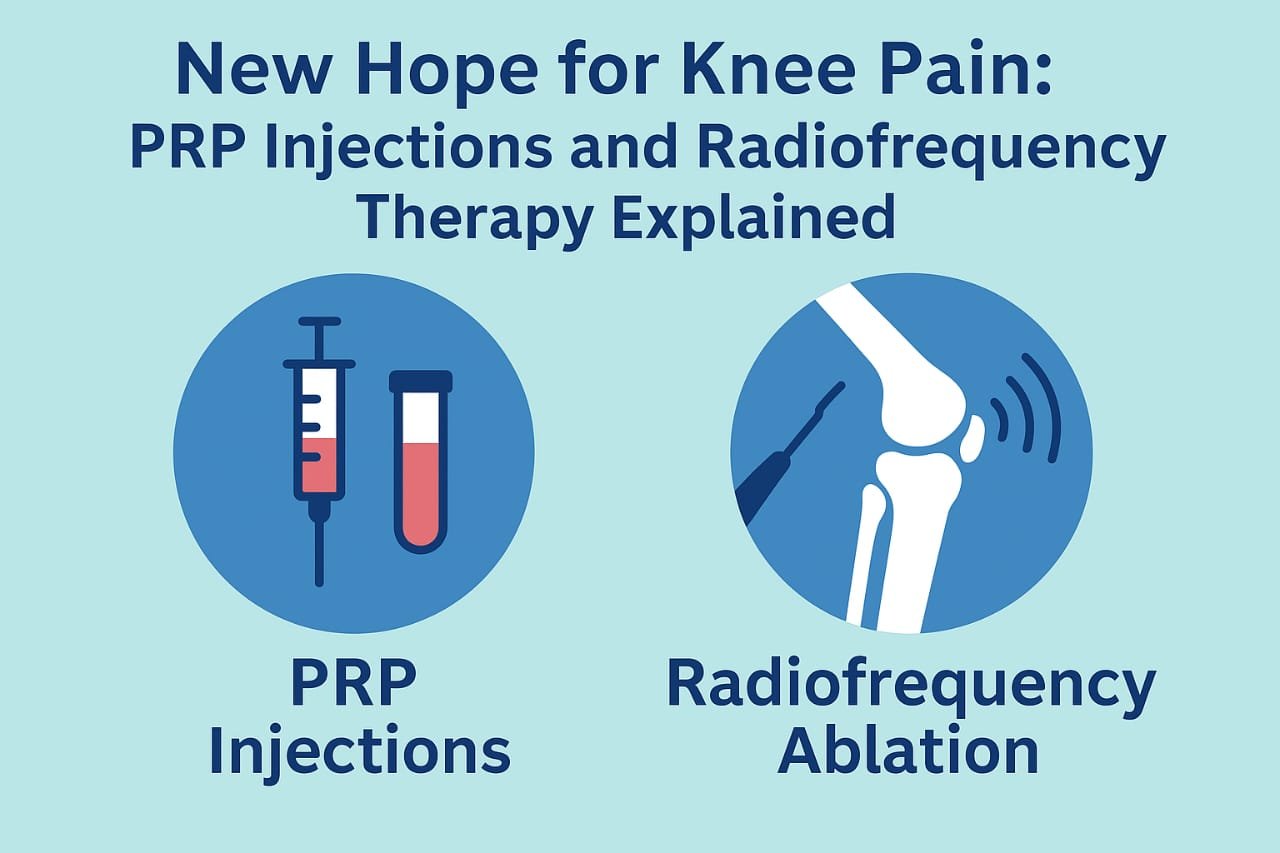If you’ve been dealing with knee pain, especially from osteoarthritis, you’re not alone. Millions of people experience the same discomfort, and for many, common treatments like painkillers or steroid injections don’t provide long-term relief. But there are two modern therapies, offering fresh hope—Platelet-Rich Plasma (PRP) injections and Radiofrequency Ablation (RFA).
In this blog post, we break down what these treatments are, how they work, and what the latest research says about their effectiveness.
What Is PRP?
PRP stands for Platelet-Rich Plasma. This treatment involves drawing a small amount of your blood, spinning it in a machine to concentrate the platelets (which are rich in healing properties), and injecting it into your knee joint.
Why it works: Platelets contain growth factors that help heal damaged tissues and reduce inflammation.
What studies show:
Short-term relief (3–6 months): PRP helps reduce pain and improve movement.
Long-term relief (up to 2 years): Many patients report ongoing benefits a year or two after treatment.
Better than traditional options: PRP has outperformed steroid and gel injections in many studies.
What Is Radiofrequency Ablation (RFA)?
RFA is a procedure where a doctor uses heat from radio waves to “turn off” pain signals in specific knee nerves. A small needle is inserted near the affected nerves, and the heat blocks the pain for several months.
Why it works: It stops pain without needing to treat the whole joint.
What studies show:
Fast relief: Pain often improves within days or weeks.
Lasts up to a year: Some patients need a repeat treatment after 12 months.
Great for advanced cases: Especially helpful for people with more severe arthritis, physically unfit for surgery.
PRP vs. RFA: Which One Is Right for You?
PRP focuses on healing: It repairs tissue and may slow down joint damage.
RFA focuses on pain: It blocks pain signals for fast, lasting relief.
Both are minimally invasive and safe, with only minor side effects like temporary swelling or discomfort.
Some experts believe using both together might be even better—but more research is needed.
In Summary:
PRP is ideal for people looking to delay or avoid surgery, especially in the early stages of arthritis.
RFA is a good option if your main issue is chronic pain and other therapies have failed.
TKR is best for patients with severe arthritis, joint deformity, or those who haven’t responded to conservative options.
Each treatment has its place depending on your age, activity level, pain severity, and joint damage. Always discuss options with your orthopedic specialist to decide what’s right for you.
Final Thoughts
After reviewing over 50 clinical studies, here’s what we know: PRP and RFA are effective options for knee pain, especially when older treatments stop working.
If you’re considering something beyond temporary relief, talk to your doctor about PRP or RFA or Total Knee Replacement. With treatments like these, getting back to walking, exercising, or simply living pain-free is becoming more possible every day.
Have any questions about PRP or RFA? Drop them in the comments or share your experience below!
Disclaimer: This article is for educational purposes only and is not a substitute for professional medical advice. Always consult your doctor before starting any new treatment.

